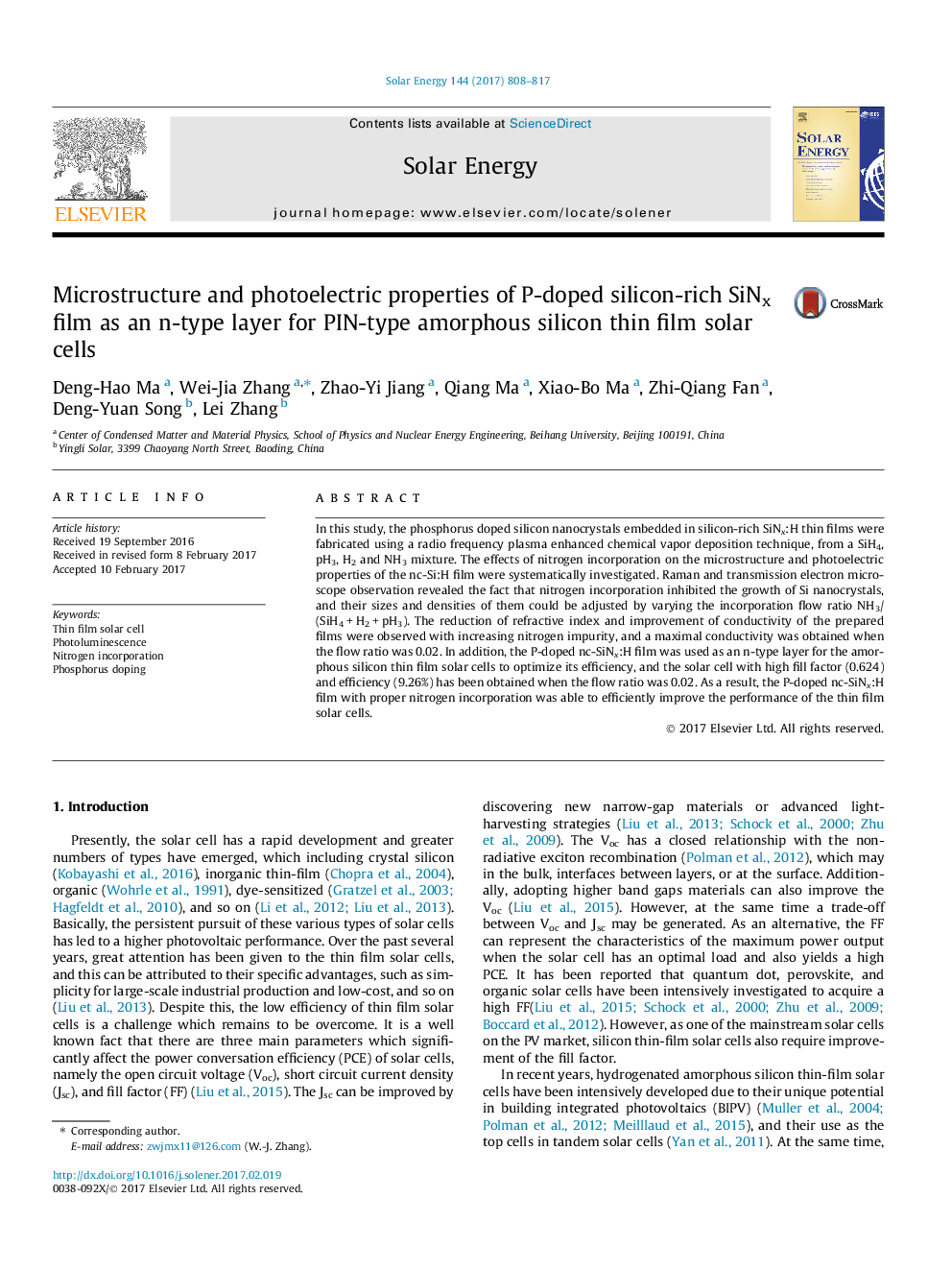| Article ID | Journal | Published Year | Pages | File Type |
|---|---|---|---|---|
| 5451172 | Solar Energy | 2017 | 10 Pages |
Abstract
In this study, the phosphorus doped silicon nanocrystals embedded in silicon-rich SiNx:H thin films were fabricated using a radio frequency plasma enhanced chemical vapor deposition technique, from a SiH4, pH3, H2 and NH3 mixture. The effects of nitrogen incorporation on the microstructure and photoelectric properties of the nc-Si:H film were systematically investigated. Raman and transmission electron microscope observation revealed the fact that nitrogen incorporation inhibited the growth of Si nanocrystals, and their sizes and densities of them could be adjusted by varying the incorporation flow ratio NH3/(SiH4Â +Â H2Â +Â pH3). The reduction of refractive index and improvement of conductivity of the prepared films were observed with increasing nitrogen impurity, and a maximal conductivity was obtained when the flow ratio was 0.02. In addition, the P-doped nc-SiNx:H film was used as an n-type layer for the amorphous silicon thin film solar cells to optimize its efficiency, and the solar cell with high fill factor (0.624) and efficiency (9.26%) has been obtained when the flow ratio was 0.02. As a result, the P-doped nc-SiNx:H film with proper nitrogen incorporation was able to efficiently improve the performance of the thin film solar cells.
Related Topics
Physical Sciences and Engineering
Energy
Renewable Energy, Sustainability and the Environment
Authors
Deng-Hao Ma, Wei-Jia Zhang, Zhao-Yi Jiang, Qiang Ma, Xiao-Bo Ma, Zhi-Qiang Fan, Deng-Yuan Song, Lei Zhang,
